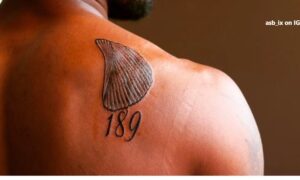It’s said a draft class can’t be fully graded until at least three years after the picks are made. That’s why after submitting grades for every Pittsburgh Steelers pick made in 2021, I began going back through and grading previous Steeler draft classes beginning with 2018. Today continues the third class in that exercise, with the Steelers’ first of two seventh-round picks in the 2016 NFL Draft: Demarcus Ayers, a wide receiver from Houston.
This exercise follows the six viewpoints (listed below) for examining and re-grading a pick. Each of the first five viewpoints gets examined and assigned a letter grade, before taking that analysis and combining it into a final letter grade. Those five viewpoints comprise much of what goes into the draft grades consumed by so many every year after the draft.
Steelers’ Career: What did the player contribute to the team that drafted him?
NFL Career: Did the player make the pick look better in hindsight after leaving Pittsburgh?
Pick Value: Did the player outperform his draft slot? Did he fail to live up to the pick used on him?
Positional Value: Was the player the best player remaining at his specific position in the draft?
Other Options: Did any players go during the next round that were better selections?
Overall Grade: A final mark to denote whether the selection was an overall positive one, or one better spent elsewhere.
Each factor in a retrospective doesn’t apply evenly to every pick made; consider the grades weighted. For example, to return a high grade in pick value, a first-round pick should have a long and impactful career, while a later-round pick needs only a couple seasons as a back-up or modest contributor to be worth the selection used on him.
Some factors are universal, though. Whether picked first overall or 259th, there will always be other options on the board to compare the player to, and steals and reaches can come from any place in the draft.
Round 7, Pick 8: Demarcus Ayers, WR, Houston
STEELERS CAREER: D-
Ayers entered the NFL as a final-round lottery ticket selection by the Steelers with the team’s extra seventh-round pick that year. He failed to make the active roster out of training camp, and spent most of the season on the practice squad. The Steelers promoted him for the final three weeks of the season, and he played in two games.
The first came in Week 16 against Baltimore, and his other came in Week 17. At 10-5 and with the AFC North wrapped up, Pittsburgh rested most of its starters against the Cleveland Browns. Ayers got the start that week and was the team’s second-leading receiver in the win. He caught five passes for 44 yards and his only NFL touchdown from quarterback Landry Jones. That was Ayers’ final game in Pittsburgh — the Steelers released him during cutdowns before the 2017 season.
NFL CAREER: N/A
His final game in Pittsburgh was Ayers’ final game in the NFL to this point. He stuck around in the league for one more year, bouncing from practice squads in New England to Chicago. He stuck with the Bears until cutdowns for the 2018 season, when Chicago released him.
Since, Ayers has pursued every avenue available to earn another chance at the NFL. He joined the San Antonio franchise in the AAF until that league folded. Five months later, Ayers was picked in the XFL’s first and only draft, but failed to make New York’s final roster.
Less than a month after his release from the XFL, Ayers signed with Saskatchewan in the CFL. That was the league that he stuck in, and Ayers remains on the Roughriders’ roster a year later, after the 2020 season was canceled. Like the player drafted before him by Pittsburgh, Travis Feeney, Ayers will get his best shot to attract some NFL attention starting in August when the league’s season begins.
PICK VALUE: D+
Picked near the front of the seventh round, Ayers didn’t have to do much to provide some kind of decent return for such a late pick. One start and three games isn’t quite enough to reach a break-even point in that regard, but it is at least something. He was also the final seventh-round pick for three years that actually made the Steelers’ roster, even if it was only for one season. Not enough to call this pick a great value, but enough to say it was better than a lot of seventh-rounders.
POSITIONAL VALUE: D+
Compared to the remaining receivers drafted in the seventh round, Ayers looks good. But going in the seventh round means he can be compared to the undrafted players from that year. And there are some missed opportunities there.
Looking briefly at the actual drafted players, three went after Ayers in 2016. Daniel Braveman (230th, Chicago), Devin Fuller (238th, Atlanta), and Kenny Lawler (243rd, Seattle) never made an NFL reception and played a combined three games. Charone Peake (241st, New York Jets) did make it onto a field in a contributing role as a rookie, and played in 31 games over three years for the Jets. He had 19 receptions for 186 yards in 2016 with New York, his only season as a contributor.
The undrafted class of receivers was a strong one, though. Robby Anderson looked like a No. 1 receiver for years with the Jets. Signing with Carolina last offseason, Anderson had a 95-catch, 1,096-yard breakout season last year and is part of a dynamic 1-2 tandem with D.J. Moore.
Kalif Raymond (Denver) and Alex Erickson (Cincinnati) have nine combined years as kick and punt returners, and occasional deep threats. Geronimo Allison increased his receiving yardage every year from 2016-2019 with Green Bay, and is competing to start with Detroit. Chester Rogers had four years as a contributor in Indianapolis, and is still hanging around on Tennessee’s roster. He didn’t stay at receiver, but J.D. McKissic was a UDFA at the position, and had 80 catches last season as a receiving back for Washington.
OTHER OPTIONS: C
Picked only nine selections after Feeney, a lot of the same alternatives to Feeney’s selection are better alternatives in retrospect to Ayers’, as well. Specifically, Jalen Mills, a versatile piece who can start and perform to expectations at both safety and cornerback, and got a four-year deal with New England this offseason. Further down is Jayron Kearse, a backup safety with Minnesota and now with Dallas.
Highlighting the non-DBs among the remaining 2016 picks is Austin Blythe, a starter at center for the L.A. Rams, now with Kansas City on a one-year deal. The vast majority of the remaining picks followed trajectories much like Ayers, but a few stand out as clearly better options if Pittsburgh could have its pick back.
OVERALL GRADE: D
When Pittsburgh picked Ayers, the team was in rough shape at receiver. Rising star Martinis Bryant received a season-long suspension. Cobi Hamilton and Sammie Coates were getting consistent snaps and starting games. Eli Rogers was the team’s No. 2. With his strong showing in Week 17 as a rookie, Ayers had a legitimate chance to earn more snaps and spend the full 2017 season on the active roster, if Pittsburgh kept a similar receiving group around.
The Steelers got better in a hurry at the position, though, and the immediate upgrade of JuJu Smith-Schuster and return of Bryant eliminated the need the team had for a player like Ayers. The Houston product didn’t have the talent to break through on a roster elsewhere, and has spent multiple years with multiple league trying to get another chance at the NFL.
Ayres can at least say he made an NFL roster, got a start, and scored a touchdown in his rookie season. That’s more than a lot of seventh-round picks can say. For that, this pick is not a complete failure. But even with a selection of such little consequence, it’s hard to call it a success.








